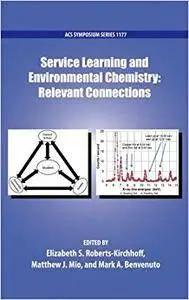Elizabeth S. Roberts-Kirchhoff, Matthew J. Mio, Mark A. Benvenuto, "Service Learning and Environmental Chemistry: Relevant Connections"
English | 2015 | ISBN: 0841230080 | PDF | pages: 233 | 4.8 mb
English | 2015 | ISBN: 0841230080 | PDF | pages: 233 | 4.8 mb
Like many techniques and tools, service learning within chemistry courses is a way to help students supplement their education with a lasting appreciation for the subject matter they have learned. Perhaps the reason the traditional lecture continues to be a mainstay of higher education is because the students, faculty, and administrators are all very used to it. Adding a service-learning component to many chemistry courses may not be difficult, though. While it requires extra time outside the lecture hall or teaching laboratory, this increase appears to be more than offset by the depth of student learning, and by what experiences they take away from the course. The learned connections can be as varied as the faculty members who teach different chemistry lecture or lab courses, or who engage in associated research projects.
There are many ways in which service learning can be incorporated into the chemistry curriculum, whether in the traditional lecture class, in laboratory classes, or in research projects. Environmental chemistry connections are also unmistakable, and serve as studies that are both practical and of concern to our students and other members of our communities. All such techniques and scenarios can enrich a student's learning experience, and be beneficial to some segment of the local population as well.
In short, service learning can help move the study of chemistry away from a more traditional model to one that involves both learning and raising awareness of conditions in their shared environment. Service learning, therefore, is a powerful tool by which chemists can effect both pedagogical and social change.



